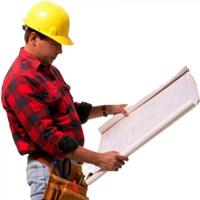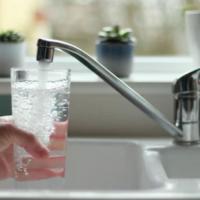6 Common Risks Associated with Drinking Water Out of the Tap
by Sarah Trell on Jul 20, 2016
The human body relies on water to fuel and replenish overall health and wellness in individuals of all ages. Keeping a healthy and happy body requires the use of clean water for drinking, cooking, bathing, cleaning, and much more. Because much of the accessible water supply on the earth today has become polluted due to any number of different contaminants, scientists and public health leaders alike knew that clean water solutions would be necessary to provide clean water to the public.
As America embarked on the 20th century, clean water solutions continued to progress, change, and evolve as research and new devices became more widely available and effective. Today, many affordable and easily accessible devices are available to the public to help reduce risks associated with impure water. While public health officials do their best to keep public water sanitary, many contaminants still make their way into drinking supplies each day. The following six risks can be avoided with the use of a water filtration device or purification system.
1. Naturally Occurring Chemicals and Minerals
Many people think of water as needing to have minerals in order to be healthy for the body. While there are some healthy minerals and vitamins found naturally in water, high levels of chemicals and minerals like arsenic, radon, and uranium can lead to illness and other serious health problems. Public water supplies nearly always have some of these chemicals and minerals left in them, even if the city considers them to be at “safe levels.” You can protect yourself from unhealthy contaminants and start getting better than bottled water quality with a complete water softener and filter combo from every tap in your home.
2. Sewage Releases and Local Land Practices
While public water supply is thought to be safe and clear by most water consumers, there are often cases in which contaminants make their way into public drinking water. Public health officials measure water contaminant levels regularly to determine what level of pollution is acceptable for drinking. If sewage breaks or accidents occur, fecal matter and other sanitation waste may be left in drinking water. Public health announcements may be too late to warn you and your family before you drink tap water with similar contaminants. Other common pollutants included those from land practices like fertilizer, pesticides, and livestock contamination.
3. Manufacturing Processed Waste
Manufacturing companies often produce waste like cyanide that can make its way into public water supplies. Filters and purifiers are effective ways to protect from this harmful waste.
4. Malfunctioning Waste Water Treatment Systems
In trying to keep water pure and sanitary, a lot of technology is used to treat and clean water. If a system malfunctions, waste like that in septic systems may find its way into public tap water.
5. Disinfection Byproducts
Another common contaminant in public water supply is the chemicals used to treat water. Rather than go through the long and time consuming task of heating purification, many public water supplies use chemicals to purify water and may leave substances behind like trihalomethanes, haloacetic acids, bromate, and chlorite.
6. Unregulated Chemicals
While chemicals like chlorine are commonly found in public drinking water, the EPA recently discovered 18 other unregulated chemicals that were present in more than 1/3 of tested public water systems.
Rather than relying upon the word of your public health officials, turn to filter systems you can rely on for pure and safe drinking water.
Popular Articles
Three Places to Spend Money on the Exterior of Your Home
When you have the exterior of your home remodeled, you are investing, time, energy and convenience into the project and you want to make sure that...
98561 Views
Homemade Headboards-Make an Upholstered or Wooden Headboard
Homemade headboards can add a lot of personality to any bedroom. They can be coordinated with existing furniture and room decor or they can be the...
75125 Views
When to Use a Brush, Roller or Sponge Brush
Brushes are a good choice for painting trim and woodwork. They are also useful for cutting in the edges around the top and bottom edges and corners...
72231 Views
Creating a Cottage Kitchen with Bead Board
Kitchen decor can range from modern and bold to elegant and elaborate by using strategic kitchen pieces. One of the most popular decorating trends...
53546 Views
Gas Fireplace Diagnostics and Troubleshooting
Follow these steps for diagnosing and troubleshooting Gas Fireplaces repairs. For the average DIYer, this may seem intimidating, depending on the...
30975 Views
Latest Articles
How Much Does It Cost To Take A Bath?
Plumbers know that a bath may seem like a relaxing luxury, but the real cost extends far beyond your water bill. The average soak uses 35 to 50...
on Apr 8, 2025
10 Concrete Patio Ideas on a Budget
A concrete patio can be a game-changer for your outdoor space. It is durable, versatile, and can be customized to fit your style. But what if you...
on Mar 25, 2025
Tips for Creating a Stunning Personalized Photo on Canvas
Order the unique beauty of a personalized photo on canvas and bring your memories to life. With a customized photo on canvas, you can transform...
on Mar 7, 2025
Best Areas to Buy Property in Singapore for Long-Term Growth
Singapore's real estate market remains one of the most stable and lucrative in the world. With limited land supply, strong governmental...
on Feb 18, 2025
Troubleshooting Excess Water in Your HVAC Secondary Condensate Drain Pan
When maintaining your air conditioning system, it is easy to overlook the condensate drain pan - until excess water starts pooling in places where...
on Jan 12, 2025
Featured Articles
What Type of Licensed Contractor Should You Hire?
on Feb 28, 2017
Hire Contractors / Estimates

Looking for a specialty project? There are many types of contractors available for your home improvement needs. Finding the right type of...
Sponsored Articles
Best Areas to Buy Property in Singapore for Long-Term Growth
on Feb 18, 2025
Real Estate / Finance

Singapore's real estate market remains one of the most stable and lucrative in the world. With limited land supply, strong governmental...
Actions
Top Categories
- Garden / Landscaping / Patio — 264
- Kitchen / Bathrooms — 240
- Real Estate / Finance — 203
- Appliance / Repair — 186
- Interior Design / Decor — 184
- HVAC / Air Conditioning — 148
- Cleaning / Maintenance — 144
- Improvements / Remodeling — 131
- Plumbing / Basements — 118
- Floors / Tile / Hardwood — 116
- Doors / Garages — 113
- Safety / Security — 113
Articles Archive
More DIY Articles
Services Offered by a Quality Locksmith Company
Locksmiths are skilled professionals who can offer a wide array of security-related services. Before you panic during a lockout, you will feel good...
Keep Your Furnace Working Efficiently and without Problems
The furnace you use to heat your home has been designed to work extremely efficiently. This is especially true if it is a modern model, as the best...
More Tips on Home Inspections for Maintenance Purposes
Not all problems with a property are easy to spot. Leaks and broken shingles, cracked windows, and other, more visual issues are problems you can...
7 Self Storage Tips That Are Always Handy
If you are looking for self-storage, you are in luck! There are lots of amazing self-storage facilities around these days with different features....
Heating Your Home with a Wood Stove
Heating a house with wood, partly or totally, is environmentally and economically beneficial. Wood is a renewable fuel source and if harvested...

